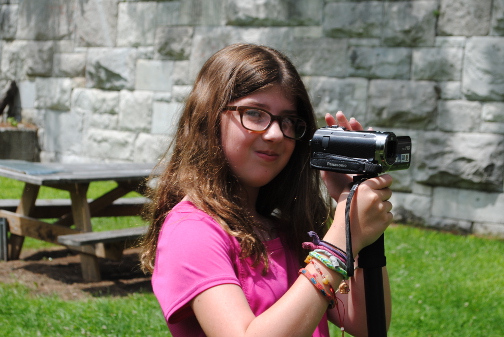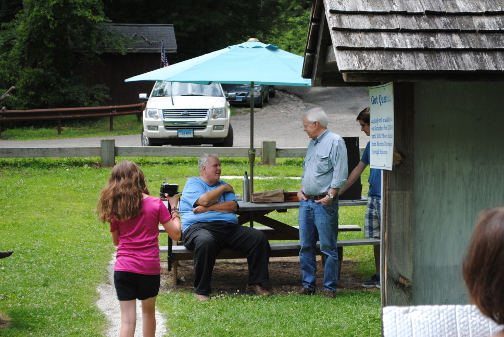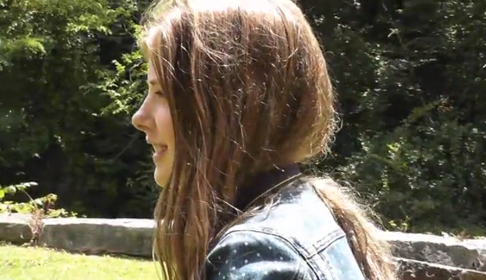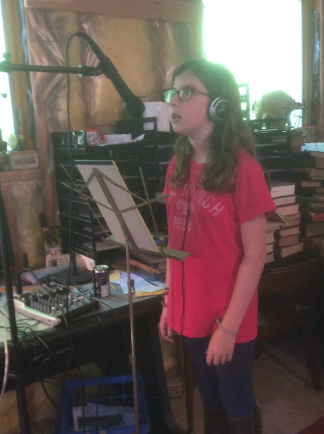The feedback we receive from visitors, as well as our own experience, tells us that while words are necessary, and photos are great to have, nothing conveys a message quite like a video. Our two youngest board members, Christian Allyn and Eleanore Jenks, have decided to take advantage of this and to create some more videos for the site.
UPDATE!!
See the video Christian and Eleanore made about slag! Go see that right now!!
About Christian
Christian, as many visitors know, is our main docent for the summers. He’s a student at UConn, and as well being an expert on the Beckley Furnace site, has a family background that includes quarries that produced some of the limestone that fed Beckley Furnace, back in the day, and still produces limestone up the hill on the other side of Route 44.
He’s known about Beckley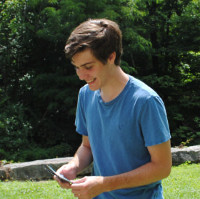 Furnace as long as he can remember, and has been a key member of our summer staff for the past four summers. Did we say that he knows a lot about Beckley Furnace and the iron industry? Well, he definitely does!
Furnace as long as he can remember, and has been a key member of our summer staff for the past four summers. Did we say that he knows a lot about Beckley Furnace and the iron industry? Well, he definitely does!
He also has some expertise that none of the rest of us at Beckley has: he knows about plants — in fact, his majors at UConn are in that area, and during his years at Housatonic Valley Regional High School (where he also volunteers in developing the school archives) he was particularly active in FFA.
For many of the videos planned as well as two that are already “in the can,” Chris is (usually) the presenter and tells us what we need to know.
About Eleanore
Eleanore, our youngest and newest board member, is still in high school in New York City. Her ties directly to Beckley, while nowhere as lengthy as Chris’ ties, are still substantial. In fact, you would not be reading this material if it were not for Elli and her hard work and creativity, because she was the designer and builder of the Beckley Furnace website, and do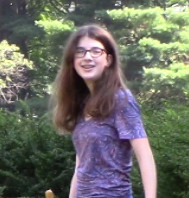 es most of the maintenance on the site as well. The welcome video for this site was her work, all the way from the filming, to the voiceover, to the music, to the post processing.
es most of the maintenance on the site as well. The welcome video for this site was her work, all the way from the filming, to the voiceover, to the music, to the post processing.
Elli’s family background includes some significant portions of heavy industry as well. A likely distant ancestor was a major player in the Saugus Iron Works in Massachusetts Bay Colony in the 1600s, and more recently another ancestor held a patent on making cinder blocks (which, like the products of the New England Slag Company, another East Canaan Barnum and Richardson business, are a repurposed industrial waste product). And just as Chris lives within a stone’s throw from a limestone quarry, Eleanore lives a stone’s throw from the site of one of the 26 blast furnaces that once dotted the Salisbury Iron District, of which, of course, Beckley Furnace was one.
As you might have guessed from her work on the website, Elli is mostly (but not entirely) involved in the videography of this new video series.
What’s coming next?
As well as the upcoming videos, there’s another project the two have in mind. It’s something that all smartphone users will appreciate. They are planning a series of QR codes posted around the Beckley site that people with smartphones will be able to click on and be connected automatically to material on this website about the items in the area where the QR code in question is posted. It’s not economically possible to create permanent signs for many aspects of the Beckley Furnace complex, and we think that the use of QR codes will help us provide information to visitors quickly and economically. We’re thinking about the slag pile and the Leffel Turbine as likely candidates for QR codes of their own, but there will certainly be others.
So, thanks to Christian and Eleanore!!!
Like this:
Like Loading...


 es most of the maintenance on the site as well. The
es most of the maintenance on the site as well. The 